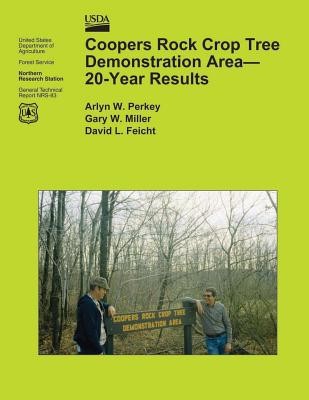
- We will send in 10–14 business days.
- Author: United States Department of Agriculture
- Publisher: CreateSpace Independent Publishing Platform
- Year: 2015
- Pages: 32
- ISBN-10: 1505825385
- ISBN-13: 9781505825381
- Format: 21.6 x 27.9 x 0.2 cm, softcover
- Language: English
- SAVE -10% with code: EXTRA
Coopers Rock Crop Tree Demonstration Area? 20-Year Results (e-book) (used book) | bookbook.eu
Reviews
Description
During the 1988/1989 dormant season, the Coopers Rock Crop Tree Demonstration Area was established in a 55-year-old central Appalachian hardwood forest in north-central West Virginia. After treatment, 89 northern red oak (Quercus rubra L.) and 147 yellowpoplar (Liriodentron tulipifera L.) crop trees were monitored for 20 years. This report summarizes the growth in diameter at breast height (d.b.h.) and crown development of crop trees from age 55 to 75 after they received various degrees of crown release resulting from crop tree management and traditional area-wide thinning. Annual d.b.h. growth response is presented to illustrate the year-to-year fl uctuations in growth that occurred throughout the demonstration area. In general, d.b.h. growth response and crown expansion were related to the degree of crown release. Northern red oak exhibited a greater response in d.b.h. growth and crown expansion than did yellow-poplar over the 20-year study period.
EXTRA 10 % discount with code: EXTRA
The promotion ends in 18d.13:20:35
The discount code is valid when purchasing from 10 €. Discounts do not stack.
- Author: United States Department of Agriculture
- Publisher: CreateSpace Independent Publishing Platform
- Year: 2015
- Pages: 32
- ISBN-10: 1505825385
- ISBN-13: 9781505825381
- Format: 21.6 x 27.9 x 0.2 cm, softcover
- Language: English English
During the 1988/1989 dormant season, the Coopers Rock Crop Tree Demonstration Area was established in a 55-year-old central Appalachian hardwood forest in north-central West Virginia. After treatment, 89 northern red oak (Quercus rubra L.) and 147 yellowpoplar (Liriodentron tulipifera L.) crop trees were monitored for 20 years. This report summarizes the growth in diameter at breast height (d.b.h.) and crown development of crop trees from age 55 to 75 after they received various degrees of crown release resulting from crop tree management and traditional area-wide thinning. Annual d.b.h. growth response is presented to illustrate the year-to-year fl uctuations in growth that occurred throughout the demonstration area. In general, d.b.h. growth response and crown expansion were related to the degree of crown release. Northern red oak exhibited a greater response in d.b.h. growth and crown expansion than did yellow-poplar over the 20-year study period.


Reviews